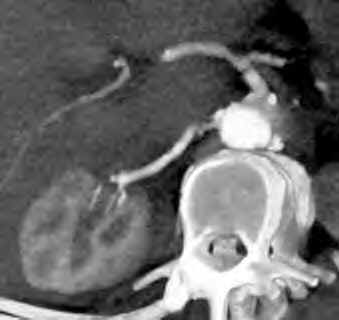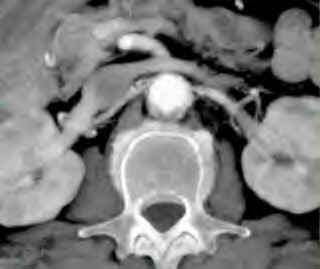|
press  above to
begin the lecture above to
begin the lecture
and
install current free versions of Quicktime,
if needed, to support lecture series audio!
Table
of Contents
-
Essential
Hypertension
-
Classification
of Arterial Hypertension
-
Control of
Blood Pressure
-
Antihypertensive
Drug Mechanisms
-
Baroreceptor
Reflexes
-
Antihypertensive
Drugs and Anesthesia
-
Hypertension:
Organ Systems Effects:
-
Hypertension and Anesthesia
Management
|
|
Chronic
Hypertension: Perioperative Issues
-
Increased
intraoperative blood-pressure lability in patients not receiving
their antihypertensive medication: Recommendation -- administer
medications on the day of surgery
-
Concerning elective surgery in
patients with uncontrolled hypertension:
-
Preoperative
approaches to the hypertensive patients:
-
Special
considerations:
Nimodipine (Nimotop)
-
Overview
-
Clinical Use:
-
Cerebral
Vasospasm:
-
Useful in
preventing/reducing cerebral
vasospasm associated with
subarachnoid hemorrhage
-
Vasospasm
-- mediated by calcium ion influx
-
Nimodipine (Nimotop)
administered over a three week
course (oral administration)
results and decreased frequency
of neurologic effects secondary
to cerebral vasospasm in
subarachnoid hemorrhage patients.
-
Side
effects/Concerns:
|
Hypertension
& Anesthetic management
-
Nitroprusside
(Nipride)
-
Overview:nitroprusside
(Nipride)
-
Direct-acting,
nonselective peripheral
vasodilator--NO mediated
-
Relaxation
of arterial and venous vascular
smooth muscle
-
Structure:
-
Immediate
onset of action
-
Short duration
(requires continuous IV
administration to maintain
effect)
-
High-potency:
-
Mechanism of Action:
nitroprusside
-
nitroprusside
interacts with oxyhemoglobin,
forming methemoglobin with
cyanide ion and nitric oxide (NO)
release
-
NO activates
guanylyl cyclase (in vascular
smooth muscle);resulting in
increased intracellular cGMP
-
cGMP
inhibits calcium entry into
vascular smooth muscle (may also
increase calcium uptake by smooth
endoplasmic reticulum): producing
vasodilation
-
Mechanisms by which cGMP relaxes
vascular smooth muscle remain to be
elucidated. cGMP does, however,activate K+
channels (hyperpolarizing effect),
activate a cGMP-dependent protein kinase, , decrease IP3, and inhibit calcium entry into the smooth muscle cells.
-
NO: active
mediator responsible for direct
nitroprusside vasodilating
effect.
-
Metabolism:nitroprusside
-
The reaction: nitroprusside interacts
with oxyhemoglobin, leading to methemoglobin
formation with
cyanide ion and nitric oxide (NO)
release produces an unstable
nitroprusside radical
-
nitroprusside
radicals decomposes releasing
five cyanide ions (one cyanide
reacts with methemoglobin to form
cyanomethemoglobin)
-
remaining free cyanide
ions (following reaction with
hepatic & renal rhodanase)
are converted to thiocyanate
{thiosulfate donor: body sulfur
stores are sufficient detoxifying
about 50 milligrams nitroprusside})
-
Organ System
Effects: Nitroprusside
-
Overview: Principal
effects referable to:
-
Cardiovascular
Effects: Nitroprusside
-
Direct
venous/arterial
vasodilation; rapid
decrease in systemic
blood-pressure
-
Reduced
systemic vascular
resistance (arterial
vasodilation; venous
capacitance vessel vasodilation)
-
Positive
inotropic &
chronotropic responses:
reflex-mediated secondary
to hypotensive response
-
Net
increase in cardiac
output due to:
-
Hypotensive
response: associated with
reduced renal function;
renin release occurs
(explains over shoot upon
nitroprusside
discontinuation {ACE
inhibitor-sensitive, i.e. an ACE inhibitor
will prevent this overshoot effect})
-
Nitroprusside: may worsen
myocardial infarction
damage due to
"coronary
steal", blood flow directed away from
ischemic areas by
arteriolar vasodilation
-
Cerebrovascular Effects:
-
Increased
cerebral blood flow,
volume.
-
with
decreased intracranial compliance,
increased
intracranial pressure results
-
Generally,
increases in intracranial
pressure are most
apparent when systemic
mean arterial pressure
decreases by less than
30%
-
if
systemic mean arterial
pressure decreases by
> 30%, intracranial
pressure decreases below
the awake level.
-
Nitroprusside
contraindicated in
patients with known
inadequate cerebral blood
flow (e.g. high
intracranial pressure;
carotid artery stenosis)
-
Hypoxic Pulmonary
Vasoconstriction
-
Clinical Uses: -- nitroprusside
(Nipride)
-
Control
hypotension during anesthesia and
surgery
-
Rapid,
predictable vasodilation
& decrease in BP
allows a nearly bloodless
surgical field, required
in some operations: spine
surgery, neurosurgery
(also reduces
transfusions)
-
Other
drugs that might be
chosen to produce
controlled hypotension,
nitroprusside is most
likely to ensure adequate
cerebral perfusion (mean
arterial pressure's of
50-60 mm Hg can be
maintained without
apparent complications
{in healthy patients})
-
The
potential for cyanide
toxicity can be
diminished by:
-
Use of other
cardiovascular depressant
drugs which reduce
nitroprusside
requirements
-
These drugs include:
volatile anesthetics,
beta-adrenergic
antagonists, calcium
channel blockers; note
that beta adrenergic
antagonists may cause a
decreased cardiac
output-- a potential
problem in patients with
diminished the
ventricular reserve.
-
Treatment of
hypertensive emergencies
-
Acute &
chronic heart failure
-
Reduction
of afterload may be
important for patients
with CHF, mitral or
aortic regurgitation,
acute myocardial
infarction with left
ventricular failure
-
Role of
nitroprusside in chronic,
congestive heart failure
-- advantageous because:
-
reduced
ventricular ejection
impedance (injection at
lower end-diastolic
volumes
-
preload
reduction (secondary to
blood pooling in venous
capacitance vessels --
reflected in decreased
ventricular and-diastolic
volume)
-
Surgical
indications:
Hypertensive
Crisis
|
| |
| |
| |
| |
| |
-
If patients have controlled
hypertension, anxiolytics may be appropriate {preoperative
medication}
-
Patients managed with diuretic
drugs for hypertension:
-
Diuretics not given on same day of surgery
-
Patients may be volume depleted
-
Patients whose hypertension is managed with diuretics may have
to be dehydrated prior to the surgical procedure
{remaining antihypertensive medications, i.e. non-diuretics
should be administered on the surgical day.}
-
Management of hemodynamic variability
during anesthetic induction/emergence:
-
Choice of anesthetic for maintenance:
-
Intraoperative
management of acute blood pressure increases:
-
Hulyalkar, A. R., and Miller, E.D., Evaluation of the
Hypertensive Patient in Principles and Practice of Anesthesiology (Longnecker,
D.E., Tinker, J.H. Morgan, Jr., G. E., eds) Mosby, St. Louis,
Mo., pp. 157-165, 1998.
-
Stoelting, R.K., "Calcium Channel
Blockers", in Pharmacology and Physiology in Anesthetic Practice,
Lippincott-Raven Publishers, 1999, p. 350.
-
Stoelting, R.K., "Antihypertensive Drugs",
in Pharmacology and Physiology in Anesthetic Practice, Lippincott-Raven
Publishers, 1999, 302-312;and "Peripheral Vasodilators", in
Pharmacology and Physiology in Anesthetic Practice, Lippincott-Raven
Publishers, 1999, 315-322.
Pharmacological Management of
Hypertension
Non-pharmacological interventions
|
|
-
For example, in patients with
asthma or chronic obstructive pulmonary disease (COPD) the use of a beta-adrenoceptor
antagonist may be contraindicated since agents
belonging to this drug class may cause
bronchoconstriction.
-
Alternatively, a patient with marginal
left ventricular function, predisposed to
congestive heart failure, may not tolerate
beta-blockers or calcium channel blockers because
both mediate a negative inotropic effect
(reduced myocardial contractility). At this step,
beginning with a low dosage first is usually
appropriate.
Antihypertensive
Medication Sequence
|
Note the
progression of antihypertensive medication
-
beginning with a low dosage of
either an ACE inhibitor, calcium channel blocker
or beta blocker
-
and proceeding, if needed to add a
diuretic
-
and ultimately additional more
powerful drugs, such as centrally acting
sympatholytics, peripheral vasodilators or
combination.
At
each step dosages are reviewed and if the patient's
hypertension is controlled then therapy may be continued
with review for possible removal of medication.
Figure adapted from Harrison's
"Principles of Internal Medicine, Thirteenth
Edition, p. 1128
|

|

Hypertensive Crisis
-
Definition: diastolic
pressure > 130 mm Hg
-
Malignant hypertension (evidence of end-organ
damage): Medical emergency-requires immediate treatment
-
Without end-organ damage present, oral or
sublingual antihypertensive drugs might be used
-
Factors causing a rapid increase in
BP:
-
Elevation of intracranial pressure (increased
blood pressure allows maintenance of cerebral perfusion)
-
Neurological causes of hypertensive crisis:
-
intracranial hemorrhage
-
head trauma
-
CNS tumor
-
thromboembolic stroke
-
subarachnoid hemorrhage
-
Cautious management for patients with
hypertensive crisis -- and hypertensive drugs given in severe
hypertension (> 200/130 mm Hg)
-
Nitroprusside sodium (Nipride) -- careful
administration {may increase
intracranial pressure and patients with reduced intracranial
compliance)
-
Beta adrenergic receptor blocking drugs:
Not recommended; may cause cerebral vasospasm
-
Centrally acting drugs {e.g., clonidine (Catapres);
methyldopa (Aldomet)}: not recommended for hypertensive
crisis as a result of neurological cause
CT imaging: Right Renal Artery Stenosis
(left); bilateral Renal Artery Stenosis (right)-(http://www.ctisus.org/angioatlas/abdominal/2_ras5a.html)
used with permission
|

|
 |
-
Hulyalkar, A. R., and Miller, E.D.,
Evaluation of the Hypertensive Patient in Principles and Practice of
Anesthesiology (Longnecker, D.E., Tinker, J.H. Morgan, Jr., G. E., eds)
Mosby, St. Louis, Mo., pp. 157-165, 1998.
|